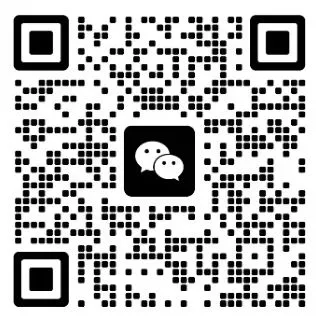Note: Please be aware that there is a resource download method at the end of the article. Download and save it as soon as possible to avoid deletion!
MQTT Server 📡
Have you ever wondered how IoT devices “talk” to each other? The answer is—MQTT! Today, we will discuss this amazing protocol and its servers.
What is MQTT?
MQTT (Message Queuing Telemetry Transport) is a lightweight messaging protocol designed for low-bandwidth, high-latency, or unreliable network environments. In simple terms, MQTT is like a courier responsible for delivering messages from one place to another.
- Features:
- Lightweight: Consumes minimal resources, suitable for embedded devices.
- High reliability: Ensures message delivery even in unstable networks.
- Easy to use: Developers can quickly get started.
If you are a beginner, don’t worry! MQTT is very friendly, like a patient teacher, guiding you step by step on how to connect devices. 😊
The Role of MQTT Servers
In the world of MQTT, the server is referred to as a Broker. It is the core of the entire communication, and all messages are forwarded through it.
- Working Principle:
Devices (clients) interact with the Broker by subscribing (Subscribe) or publishing (Publish) messages.- Client A publishes a message to a specific topic (Topic).
- The Broker receives the message and forwards it to all clients subscribed to that topic.
For example: If you have a temperature sensor installed at home, it sends temperature data to the Broker every 5 minutes. If your phone subscribes to that topic, you can see the temperature changes in real-time! 🌡️
Why Do We Need MQTT Servers?
Imagine if there were no Broker; each device would need to connect directly with other devices. This would not only be complex but could also lead to network congestion. The MQTT server acts like a traffic hub, allowing all devices to exchange information efficiently.
- Advantages:
- Decoupling: Devices do not need to communicate directly, reducing complexity.
- High scalability: Easily add more devices or topics.
- Cross-platform support: Whether it’s a Raspberry Pi or a smartphone, MQTT can be used.
For developers, the MQTT server is like a toolbox, providing various functions that allow you to focus on implementing business logic rather than the underlying communication details.
Common MQTT Servers
There are many excellent MQTT servers available on the market. Here are a few commonly used ones:
1. Mosquitto
Mosquitto is an open-source MQTT Broker that is lightweight and easy to deploy. It is very suitable for small projects or learning purposes.
– Features:
– Supports MQTT v3.1 and v3.1.1 protocols.
– Provides command-line tools for easy testing.
– Cross-platform support, running on Windows, Linux, and macOS.
If you are a beginner, you can start with Mosquitto to experience the charm of MQTT! ✨
2. EMQX
EMQX is a high-performance MQTT Broker designed for large-scale IoT scenarios.
– Features:
– Supports millions of concurrent connections.
– Offers rich plugins, such as HTTP bridging and database integration.
– The commercial version also supports cluster deployment to meet enterprise needs.
If your project needs to handle a large amount of device data, EMQX is definitely a good choice.
3. HiveMQ
HiveMQ is a commercial MQTT Broker known for its stability and reliability.
– Features:
– Provides an intuitive management interface for easy monitoring and maintenance.
– Supports various authentication methods to ensure data security.
– High availability architecture, suitable for mission-critical applications.
Although HiveMQ is a paid service, its professional services are worth considering, especially for scenarios with high security requirements.
How to Choose the Right MQTT Server?
When choosing an MQTT server, you need to decide based on project requirements. Here are some reference factors:
- Scale: If it’s just a personal project or a small team development, Mosquitto is sufficient. But if it involves thousands of devices, consider EMQX or HiveMQ.
- Budget: Open-source software is usually free but may lack technical support. Commercial products may charge fees but can provide more professional services.
- Functionality: Some projects may require specific features, such as database integration or user authentication. In this case, you need to carefully compare the capabilities of different servers.
Remember, there is no “best” server, only the server that is most suitable for you! 💡
MQTT Security
In the era of IoT, data security is crucial. MQTT itself does not include encryption mechanisms, so additional configurations are needed to protect communication security.
- TLS/SSL Encryption: By enabling TLS/SSL, you can prevent data from being eavesdropped or tampered with.
- Username and Password Authentication: Ensures that only authorized users can access the Broker.
- ACL (Access Control List): Restricts which devices can subscribe to or publish specific topics.
Do not overlook these security measures! After all, no one wants their smart home to be controlled by hackers, right? 🔒
Practical Application Scenarios
MQTT has a wide range of applications, covering almost all IoT fields. Here are some typical examples:
- Smart Home: Control lighting, air conditioning, curtains, and other devices.
- Industrial Automation: Monitor production line status and optimize resource allocation.
- Vehicle Networking: Real-time acquisition of vehicle location and health status.
- Agricultural Monitoring: Collect soil moisture, temperature, and other data to guide agricultural production.
Whether in homes, factories, or fields, MQTT can play an important role. 🌱
Hands-On Practice
Want to try MQTT? Here are simple steps:
- Download and install Mosquitto (or another MQTT server).
- Use the
mosquitto_subcommand to subscribe to a topic, for example:mosquitto_sub -h localhost -t "test/topic" - Use the
mosquitto_pubcommand to publish a message, for example:mosquitto_pub -h localhost -t "test/topic" -m "Hello MQTT!" - Observe whether the subscriber receives the message. 🎉
Isn’t it simple? Go ahead and give it a try!
I hope this article helps you better understand MQTT servers and their roles. If you have any questions or thoughts, feel free to leave a comment and share! Let’s explore the infinite possibilities of IoT together! 🚀
Resource Download: |
Add me on WeChat: |
Support me: |
Writing is not easy, thank you for liking and sharing. May good fortune follow you throughout your life~~~